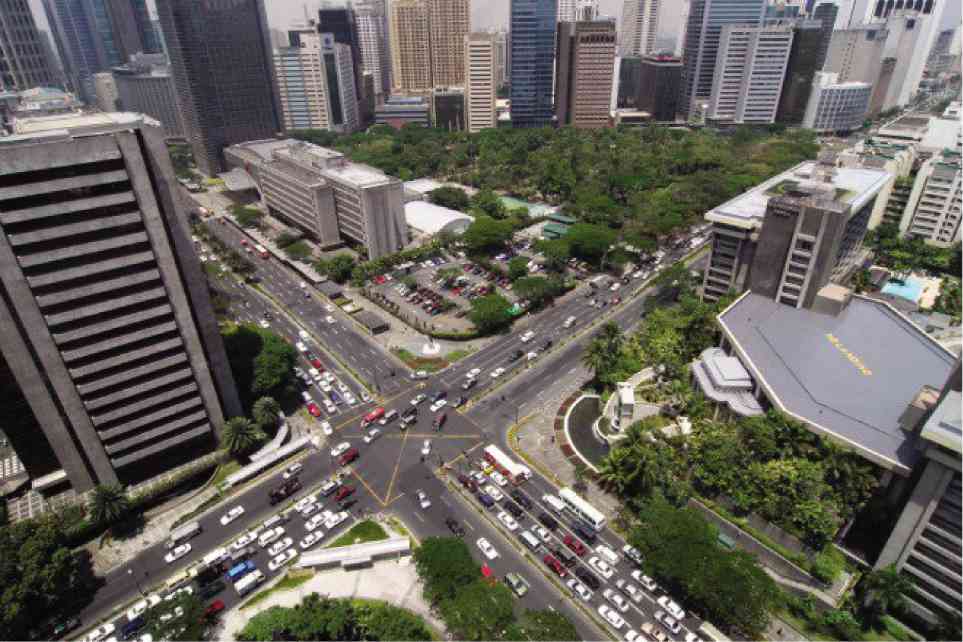Manila recorded the lowest office vacancy rates across key cities in Asia in the first quarter of the year, indicating sustained robust leasing activities.
This was according to the First Quarter Asia Pacific Office Overview report by real estate services firm Cushman & Wakefield, which stated that Manila recorded a 2.4 percent vacancy rate, followed by Tokyo (3.9 percent), and Ho Chi Minh City (4 percent).
In its report, Cushman & Wakefield cited Manila’s “healthy leasing activity and rental growth in the first quarter of 2017,” as office demand in the country “hasn’t witnessed any noticeable impact due to policy shifts in the technology and outsourcing sector.”
The outsourcing industry is currently one of the biggest drivers of demand for office spaces in the Philippines.
However, the upcoming large-scale supply is seen to slowdown rental growth in the short term, the report added.
Growing demand
Separately, Colliers International Philippines said in its first quarter report on offices that demand was seen to grow by 8 percent in the next 12 months. Demand, it added, is shifting to a more diversified mix of business process outsourcing (BPO) firms, traditional companies, offshore gambling and government agencies.
“Metro Manila office net take up reached 81,400 sqm GLA for this quarter, as vacancy remained low despite new completions. Pre-leasing is still strong with over 40 percent of buildings due in 2017 leased out. A significant shift in tenant mix was seen with BPO share representing only 21 percent of total transactions, down from 60 percent in 2016,” Dinbo Macaranas, senior research manager at Colliers Philippines, said in the report.
He explained that this decline in BPO share can be attributed to geopolitical concerns, forcing tenants to take a wait-and-see position on new expansions, and to the delay in Philippine Economic Zone Authority proclamations.
“The market was driven by traditional companies comprising 42 percent of transaction, offshore gambling at 30 percent and government agencies at 9 percent. Colliers believes that the BPO contribution may improve as foreign and local policies become clearer. Colliers suggests that developers build office spaces with sizeable floor plates to cater to BPOs, while allowing division of floors to meet the demand from other tenant types,” Macaranas added.
Declining vacancies
Separately, a first quarter report on the office property market by KMC Savills Research showed that Metro Manila continues to enjoy strong demand for office spaces.
“Performance across submarkets was mixed. Bonifacio Global City, Alabang and the Bay Area experienced a decline in vacancies despite an influx of new supply. There was impressive net take-up in these submarkets, but the overall vacancy rate in Metro Manila increased to 2.4 percent, due to decreased occupancy in Makati central business district and Quezon City,” the report stated.
“Although the vacancy rate was held in single digits, rental growth continued to normalize at 3.7 percent year on year. The Makati CBD maintained its premium in the capital after rentals grew by 3.8 percent year on year—outperforming other submarkets,” it said.
Additional space
According to KMC Savills Research, the first quarter of 2017 saw an additional 162,200 sqm of office space in Metro Manila. BGC accounted for two thirds of the new supply with the completion of W City Center and Citibank Plaza.
“We are still expecting about 781,800 sqm of additional office supply within the year. Downward pressure on rents should persist in the coming quarters. However, market appetite remains largely intact as evidenced by the brisk absorption of new completions during the quarter,” the report stated.
“The better-than-expected performance in the first three months should ease concerns of double digit vacancy rates in Metro Manila this year. As occupier demand tries to keep up with the upcoming supply, vacancies may stay relatively elevated in the coming years,” KMC Savills further noted.
Data from KMC Savills Research showed that Makati CBD recorded the highest rental rates in the first quarter at P1,027.70 per sqm per month, followed by BGC at P906.10, and Quezon City at P718.50.
The vacancy rate among Metro Manila submarkets was highest in Quezon City at 11.9 percent, followed by Makati CBD (1.9 percent); Ortigas Center (1 percent); BGC and Alabang (both at 0.9 percent); and Bay Area at 0.2 percent.
New supply of Grade A office spaces is expected between now and 2020, the bulk of which would be coming in at BGC (784,214 sqm of additional space); Bay Area (432,889 sqm); Quezon City (364,434 sqm); Alabang (322,607 sqm); Makati CBD (137,584 sqm); and Ortigas Center (63,789 sqm).
